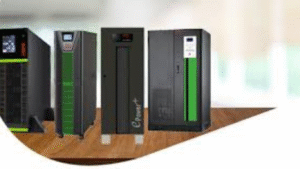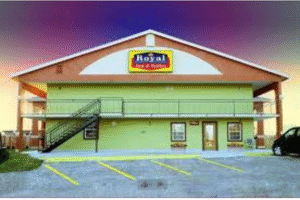Understanding Cloudlin Down ETH1: Troubleshooting and Resolution
In the world of cloud computing, maintaining smooth and uninterrupted network performance is crucial for businesses and organizations that rely on digital services. A problem that many network administrators may encounter is network interface issues, such as the “Cloudlin down ETH1” error. This particular issue can cause disruptions in network connectivity, leading to decreased performance and potentially impacting the operations of a cloud-based infrastructure.
In this article, we will explore the causes, troubleshooting steps, and potential solutions for the “Cloudlin down ETH1” error, providing network administrators and cloud service users with the knowledge needed to resolve the issue effectively.
What Does “Cloudlin Down ETH1” Mean?
The term “Cloudlin down ETH1” refers to a network interface issue that occurs in the context of cloud-based infrastructure, particularly within environments that use virtual machines or cloud servers. Let’s break down the components of this error to understand its meaning.
1. Cloudlin:
The term “Cloudlin” likely refers to a specific cloud service provider or a custom cloud infrastructure. In some cases, it might refer to a cloud hosting service or a virtual private server (VPS) environment.
2. Down:
When the term “down” is used in network terminology, it signifies that the network interface is not active or functioning as expected. The interface may be disabled, disconnected, or experiencing issues that prevent it from transmitting and receiving data effectively.
3. ETH1:
“ETH1” is the name of an unique network connect on a system. In many Linux-based systems or virtual machines, network designs are typically labeled as eth0, eth1, and so on. The “ETH1” interface could refer to the following network adapter (with eth0 being the first) on a cloud server or virtual machine.
Thus, the phrase “Cloudlin down ETH1” indicates that the second network interface (ETH1) on a cloud server is currently down or inactive, causing a disruption in network connectivity for that particular interface.
Common Causes of the “Cloudlin Down ETH1” Error
Several factors can cause the “Cloudlin down ETH1” error. Understanding the root causes is crucial for troubleshooting and resolving the issue quickly. Below are some of the most common causes of this problem:
1. Network Configuration Errors
One of the most frequent reasons for the “ETH1 down” error is misconfigured network settings. This could involve incorrect IP addresses, subnet masks, or gateway settings that prevent the network interface from functioning properly. In cloud environments, network interfaces are typically configured either manually or automatically via DHCP (Dynamic Host Configuration Protocol), and a misconfiguration can cause the interface to go down.
2. Hardware Failures or Faulty Network Adapters
In some cases, the physical network hardware or virtual network adapters may malfunction, causing the “ETH1 down” error. Although cloud environments usually rely on virtualized networking components, hardware failures in underlying infrastructure or virtual adapters can still cause the network interface to go down.
3. Operating System or Software Bugs
Operating systems or network-related software may have bugs or glitches that lead to the deactivation of network interfaces. For example, a bug in the cloud server’s operating system (such as Linux) may cause it to incorrectly mark the ETH1 interface as “down” even though no physical failure has occurred.
4. Firewall or Security Group Restrictions
Sometimes, firewall settings or cloud security groups may block traffic to or from the ETH1 interface, causing it to appear as “down.” Security protocols or IP filtering rules might prevent the network interface from connecting to the internet or other network resources, which could result in the system reporting the interface as inactive.
5. Resource Constraints or Overload
In virtualized cloud environments, resource constraints or overloads on the server hosting the virtual machine can lead to network instability. For example, high CPU usage, excessive memory consumption, or network congestion can interfere with the proper functioning of network interfaces, causing them to go down unexpectedly.
6. Network Interface Conflicts
In some cloud setups, multiple network interfaces may be configured on a single virtual machine or server. If there are conflicts between these interfaces, such as overlapping IP addresses or network configuration mismatches, the system might disable one or more interfaces, including ETH1.
Troubleshooting “Cloudlin Down ETH1”
When faced with the “Cloudlin down ETH1” error, network administrators need to follow a systematic approach to identify and resolve the issue. Below are some key troubleshooting steps that can help restore the network interface to a functional state.
1. Check the Network Interface Status
The first step in troubleshooting is to check the status of the network interface to confirm that it is indeed down. You can do this using commands in the system’s terminal. For Linux-based systems, use the following command to check the status of the network interface:
nginx
Copy
ifconfig eth1
Alternatively, you can use the ip command to view the status:
bash
Copy
ip link show eth1
These commands will provide you with the current state of the network interface. If the output shows that ETH1 is indeed down, proceed to the next steps to investigate further.
2. Restart the Network Service
Sometimes, restarting the network service can resolve minor issues that cause the network interface to go down. On a Linux-based system, use the following command to restart the networking service:
nginx
Copy
sudo systemctl restart network
Or, if you are using a system with NetworkManager, you can restart it as follows:
nginx
Copy
sudo systemctl restart NetworkManager
Once the network service is restarted, check the status of ETH1 again to see if it comes back up.
3. Verify Network Configuration
Ensure that the network configuration for the ETH1 interface is correct. Check the following elements:
- IP Address: Make sure the IP address assigned to ETH1 is valid and does not conflict with other devices on the network.
- Subnet Mask: Verify that the subnet mask is correctly configured.
- Gateway: Check that the default gateway for the network interface is set correctly.
- DNS Settings: Confirm that DNS servers are properly configured if the issue involves name resolution.
You can typically find these settings in the system’s network configuration files, such as /etc/network/interfaces (for Debian-based systems) or /etc/sysconfig/network-scripts/ifcfg-eth1 (for Red Hat-based systems).
4. Examine System Logs
If the network interface continues to stay down, it is helpful to review system logs for any error messages or warnings related to networking. Check the /var/log/syslog or /var/log/messages logs on Linux systems to identify any relevant messages about ETH1. You can use the grep command to filter the logs for network-related entries:
perl
Copy
grep eth1 /var/log/syslog
Look for error messages that might indicate issues such as hardware failures, configuration problems, or software bugs.
5. Check Firewall and Security Group Settings
Verify that there are no firewall rules or security group settings blocking access to ETH1. In a cloud environment, security groups control inbound and outbound traffic, and a misconfigured security group can prevent the network interface from functioning.
Review the security group settings to ensure that the necessary ports are open for the ETH1 interface to communicate with other systems. Additionally, check for any firewall rules on the system itself that might be blocking traffic.
6. Check for Hardware Failures
If you’re working with physical servers or network adapters, check for any signs of hardware failure. In virtual environments, examine the status of the underlying virtual network adapter and verify that the virtual machine is properly connected to the host network.
If a hardware failure is suspected, you may need to contact your cloud service provider or data center to resolve the issue.
7. Contact Support
If the above troubleshooting steps do not resolve the issue, it may be time to contact the cloud service provider’s support team. They may be able to diagnose the problem on their end, especially if it’s related to the underlying cloud infrastructure or virtual network configuration.
Conclusion: Restoring Network Stability
The “Cloudlin down ETH1” error is a common issue that can affect cloud-based infrastructure, but with a systematic troubleshooting approach, it can usually be resolved without significant downtime. By following the steps outlined in this article—such as checking network configurations, restarting network services, verifying firewall settings, and reviewing system logs—network administrators can restore connectivity to the ETH1 interface and ensure that the cloud system functions properly.
Understanding the causes of network interface issues and implementing best practices for network management will help keep cloud environments running smoothly, preventing disruptions and optimizing performance. By staying proactive and methodical, administrators can maintain a stable and efficient cloud infrastructure for their organizations.














Post Comment